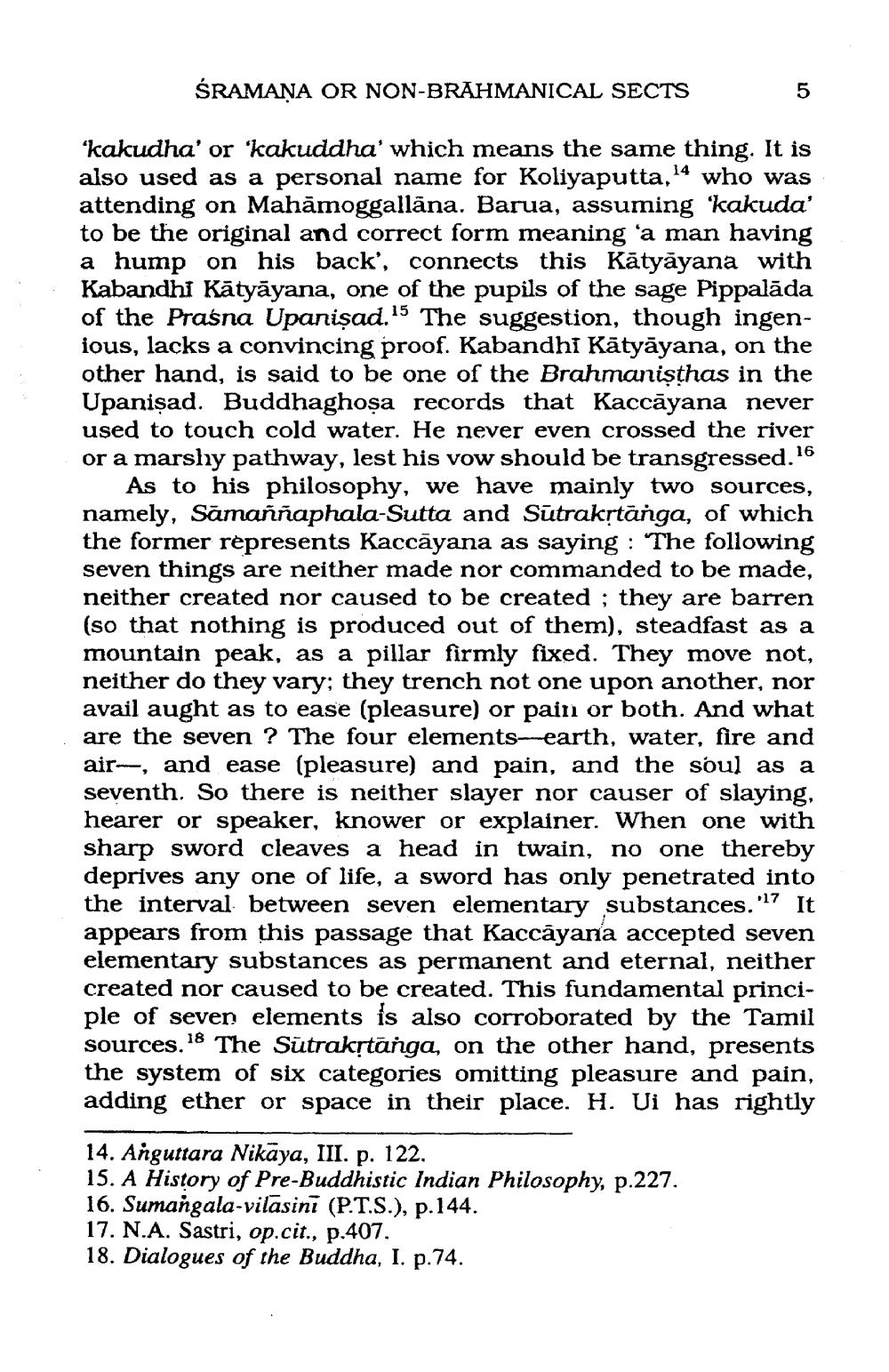________________
ŚRAMAŅA OR NON-BRAHMANICAL SECTS
5
“kakudha' or 'kakuddha' which means the same thing. It is also used as a personal name for Koliyaputta, 14 who was
ending on Mahāmoggallana. Barua, assuming 'kakuda' to be the original and correct form meaning 'a man having a hump on his back', connects this Kātyāyana with Kabandhi Kātyāyana, one of the pupils of the sage Pippalāda of the Praśna Upanişad. 15 The suggestion, though ingenious, lacks a convincing proof. Kabandhi Kātyāyana, on the other hand, is said to be one of the Brahmanişthas in the Upanişad. Buddhaghosa records that Kaccāyana never used to touch cold water. He never even crossed the river or a marslıy pathway, lest his vow should be transgressed. 16
As to his philosophy, we have mainly two sources, namely, Samaññaphala-Sutta and Sūtrakstānga, of which the former represents Kaccāyana as saying: The following seven things are neither made nor commanded to be made, neither created nor caused to be created ; they are barren (so that nothing is produced out of them), steadfast as a mountain peak, as a pillar firmly fixed. They move not, neither do they vary; they trench not one upon another, nor avail aught as to ease (pleasure) or pain or both. And what are the seven ? The four elements-earth, water, fire and airm, and ease (pleasure) and pain, and the soul as a seventh. So there is neither slayer nor causer of slaying. hearer or speaker, knower or explainer. When one with sharp sword cleaves a head in twain, no one thereby deprives any one of life, a sword has only penetrated into the interval between seven elementary substances."?? It appears from this passage that Kaccāyana accepted seven elementary substances as permanent and eternal, neither created nor caused to be created. This fundamental principle of seven elements is also corroborated by the Tamil sources. 18 The Sūtrakstānga, on the other hand, presents the system of six categories omitting pleasure and pain, adding ether or space in their place. H. Ui has rightly
14. Anguttara Nikaya, III. P. 122. 15. A History of Pre-Buddhistic Indian Philosophy, p.227. 16. Sumangala-vilasini (P.T.S.), p.144. 17. N.A. Sastri, op.cit., p.407. 18. Dialogues of the Buddha, I. p.74.




